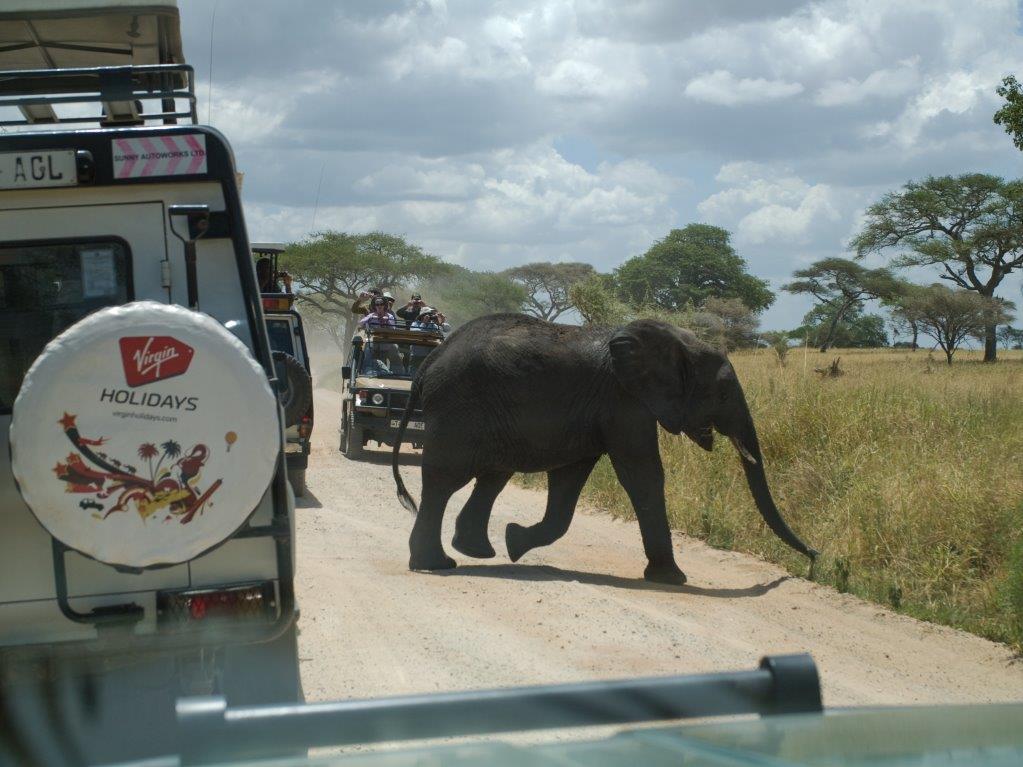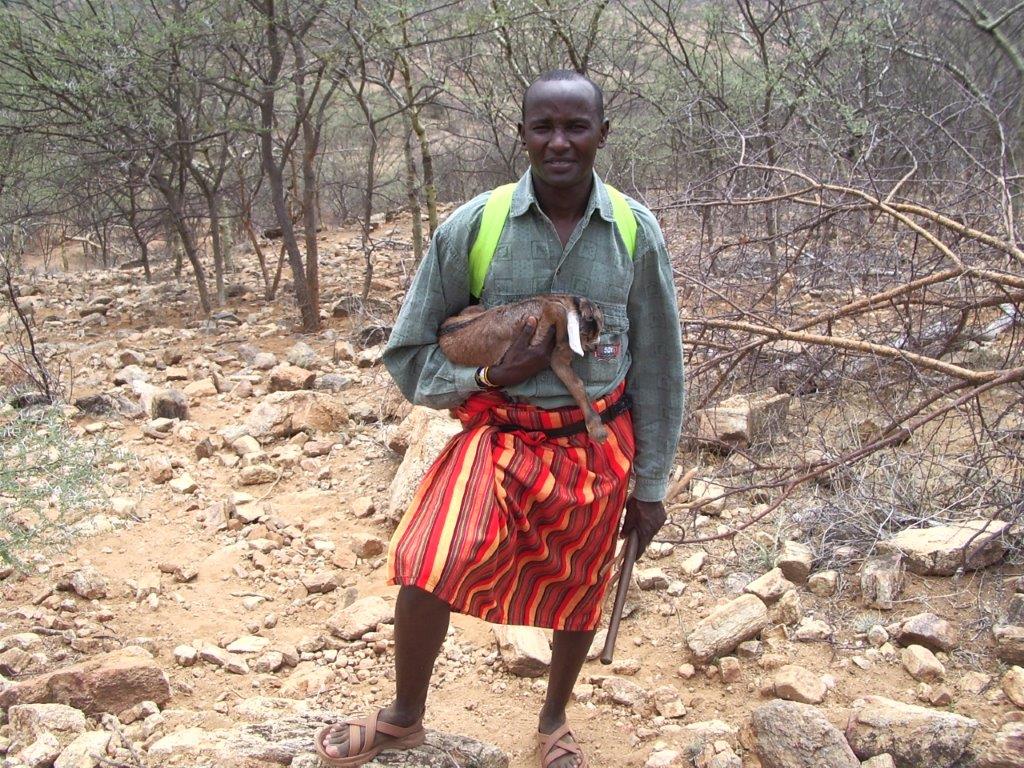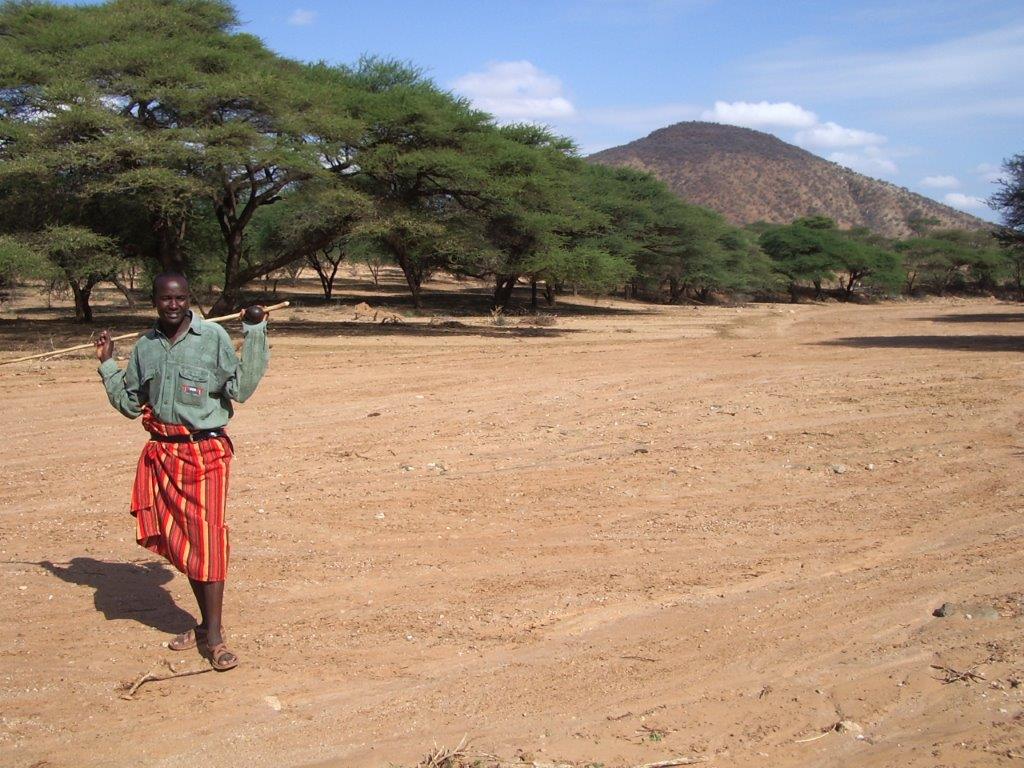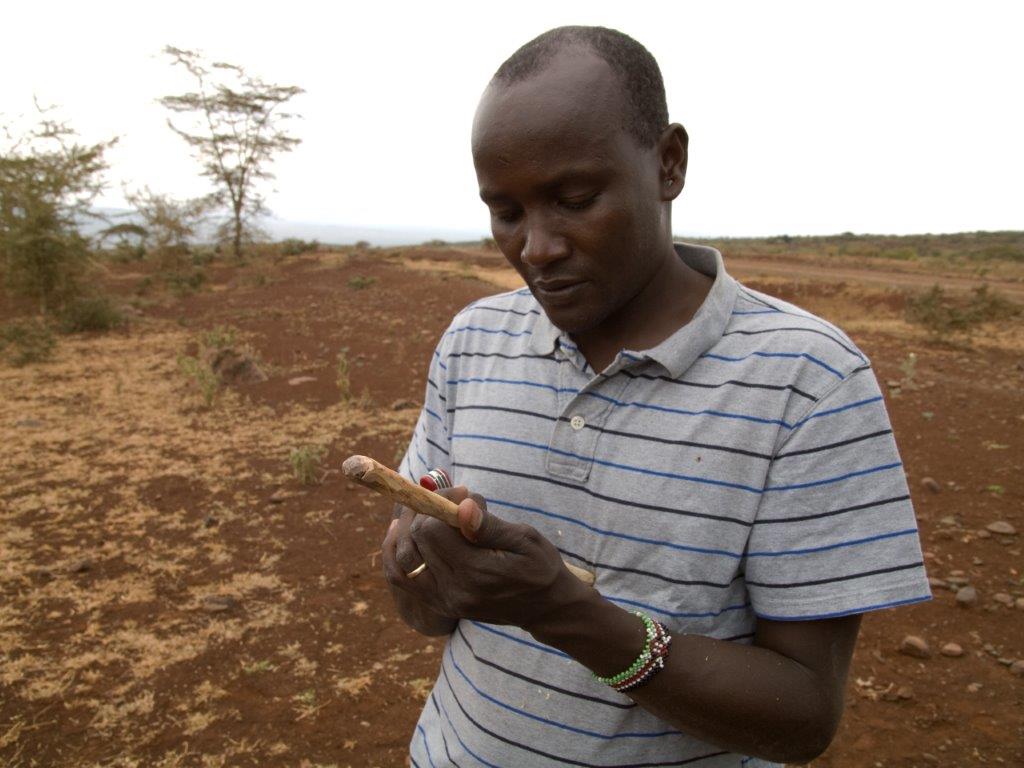Koert Lindijer has been a correspondent in Africa for the Dutch newspaper NRC since 1983. He is the author of four books on African affairs.

“I show tourists around paradise. What I don’t do is tell them that this nature is manipulated by humans,” says Kasao Laerat (50) with an ironic smile. He is talking about game parks where he has spent the last 23 years earning his living as a tourist guide. The lion peering over the endless savannah, the wildebeests plunging fatefully into a crocodile-infested river, the frolicking young cheetahs in the tall grass: it is all a sham he says. “Tourists in the West marvel at the vastness of Africa they see in documentaries and advertisements, but in reality that world is shrinking rapidly, due to population growth. Wildlife parks have become an industry.” Kasao Laerat is a Samburu and grew up with (wild) animals.
Once these parks received only a few thousand visitors a year. But last year 1.5 million tourists came to Kenya, expecting to see wild animals in untouched nature. Half a million tourists went to the Maasai Mara alone, the icon of all world parks in the country.
In the 1,500-square-mile Maasai Mara in southern Kenya, a lioness awakens and begins to closely track a plane as it descends from the cloud-strewn sky, skims over acacia trees and rumbles to the ground near a tourist hotel. “Every day at this time she looks forward to the flight,” Kasao grins. Every lion and its daily routine has been mapped by the game wardens and tourist drivers. They are not only experts on the individual characteristics of every cheetah and every rhinoceros, they know everything about their cousins. “Untouched nature? Well, the days when animals could really live free are over”.
A lion hunts at night, rests during the day, surrounded by whirring tourist buses and their exhaust fumes, but that does not bother him too much. Lions are not shy. “They mate many times because they have a low sperm count. We guides describe that as a marriage, tourists call it love, but it’s just reproductive behavior, they don’t do it for fun.”

It is very different with a cheetah. It hunts during the day and is much less easy to spy on during its moments of intimacy. It gets nervous and the clouds of dust that the vans send billowing across the savannah disrupt its hunt. “So cheetahs are adapting to the new reality: they wait until noon when the tourists have lunch in their lodgings to hunt, or at full moon. They even hunt at night these days”.
A day’s drive in the Maasai Mara costs $80, and to that the cost of a stay in an expensive lodge or tented camp needs to be added. The park is packed around this time, when the famous annual great migration takes place. Rooms can go for as much $ 2,000 a night in the most upmarket of the park’s 125 lodges.
The draw is the endless line of animals – 1.3 million wildebeest and zebras – crossing the golden savannas from the south of the Serengeti Game Park in Tanzania to the Maasai Mara in Kenya. Drawn by the scent, they are called the clowns of the African savannah. These rain sniffers can look a bit stupid, they are nervous and jumpy; typical herd animals. Each one simply follows the animal in front. The wildebeest, despite their strange gait -caused by shorter hind legs – are nevertheless able to cover long distances and climb high sides of the rivers they cross during the migration. The species’ survival power lies in their quantity.
The spectacle, as far as the tourist is concerned, takes place in Maasai Mara, because that’s where the river Mara must be crossed. The animals don’t really want to cross, because crocodiles are waiting in the water. But the pressure of the masses becomes too great at a certain point, the beasts throw themselves into the water. Or at least, that’s how it used to be.
“Sometimes it seems that there are more tourist vans by the riverside than wildebeests,” laughs Kasao. These vans position themselves behind the wildebeests and push them into the water in places where they would normally never choose to cross, because the cliff is too high or because there are too many crocodiles below. Or cars waiting for them on the other side of the river, and lions have entrenched themselves behind those cars. The wildebeests develop second thoughts in the middle of the river and want to go back, but by then they are already being grabbed by the crocodiles”. The tourists love the spectacle, unaware that their presence has disrupted the migration and changed the course of events.

There was for a moment when it seemed that the pristine nature had returned. During the corona pandemic, tourists stayed away and Kenyans had to stay at home. Maasai Mara regained its original appearance, tall grass swallowed up the roads, elephants entered the abandoned lodges and the monkeys left the hotel compounds. To prevent the wild animals becoming accustomed to the unfamiliar silence, game rangers let unemployed young people drive around in cars.
Those who want to experience the solitude of the bush in Maasai Mara now have to pay heavily for it. “Only a super-rich tourist has that pleasure,” says Kasao. He rents a part of the wildlife park and he flies in with his helicopter after all tourist vans have been temporarily denied access. “He imagines himself in the real jungle for a moment. But the reality is: there is nowhere for wild animals to hide from humans.”
This article was first published in NRC on 23-8-2023
All photo’s by Fred van Dijk, including the ones of Kasao Laerat

Other comments from Kasao:
Animals do get christened and become celebrities, just like in The Lion King. For example, a group of five male cheetahs became world famous under the name Tano bora, the Brilliant Five in Kiswahili. “The first thing a Chinese customer asked me at the airport was: ‘Show me the Tano bora and I’ll give you an extra $100’.” Kasao once took part in a film project with National Geographic about the Tano bora, not so much to observe the cheetahs as the tourist vans. “They were surrounded by 76 vans on average every day. Today, the first thing a cub sees upon waking in the morning is its mother, and then only vans. The mothers do not have enough time to take care of their children.”

Big cats fascinate tourists the most, especially since the movie the Lion King came out. “I understand, but a lion is not really the Kin g of the Jungle. Humans have made him the smartest and strongest of the jungle. But an elephant is much smarter, much more social, they protect each other. But my job is to keep my customers happy. So we drivers exchange information about where the lions are. That way I provide a dream safari and I get extra points from my customers. This is how the wildlife industry works.”

